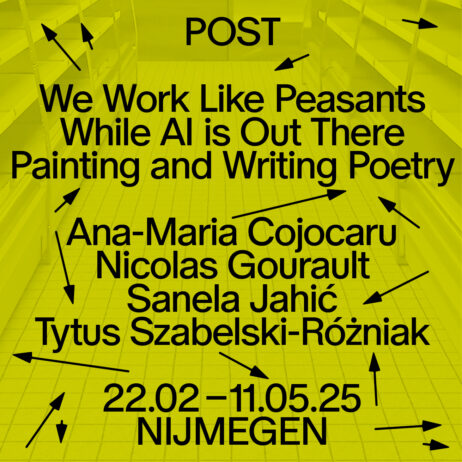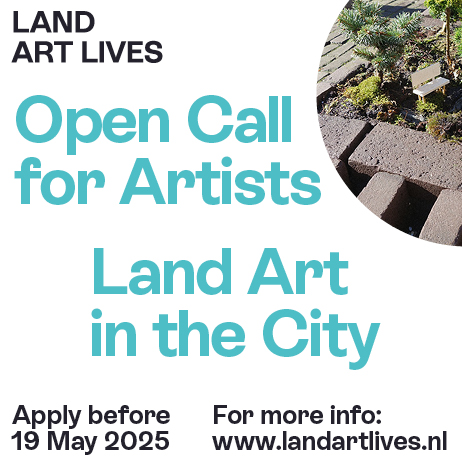What’s wrong with the art academy? – in search of flaws in art education
In 1989, at sixteen years old, I participated in the entrance exam of the art academy in Maastricht. From the moment I was able to consciously think about my future, I knew I wanted to do something in the arts. Together with some hundred other candidates I was put to work in a warehouse. We had to make form studies out of clay and struts, draw to life and there was an assignment with paper, that we had to tear and stick in as many ways as possible. The selection committee consisted of a small club of elderly men, that continuously strided by our drawing tables and were closely monitoring our progress over the course of two days. The portfolio interview seemed a cross-examination. My drawings and sketches were barely discussed. The men’s club was wondering if artistry was fitting for a girl like me. Did I know it was going to be hard? That I had to put everything aside: boys, nice clothes and going out? An artist’s life was perhaps too heavy and tough for a girl like me, I was told. I do not remember my rebuttal. I think I wanted to be admitted so badly, that I tried to convince the men’s club that I was willing to do everything and anything to get in. In hindsight I wonder if the boy that came after me was deliberated in the same fashion.
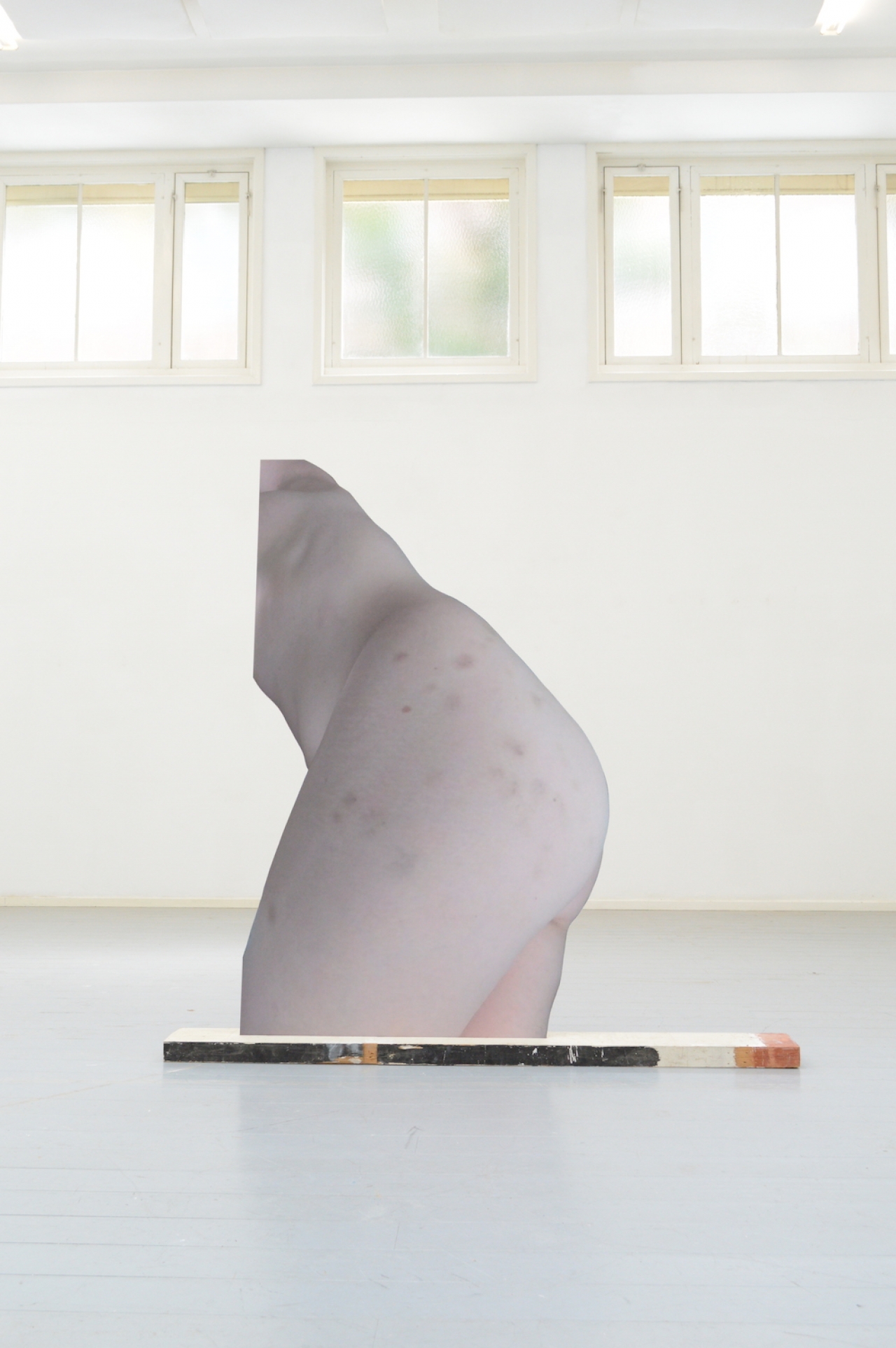
The disconcerting revelations about Juliaan Andeweg do not only refer to an unhinged and sadistic individual. Through Instagram accounts like CALLOUTDUTCHARTINSTITUTIONS we’ve encountered more stories of sexism, racism and harassment of students. It is slowly becoming clear that there’s something thoroughly wrong at art academies and Andeweg’s crimes cannot be seen separate from the toxic environment that places some students on a pedestal and silences others. How come that an academy does not protect it’s (female) students? Why were the signals not picked up adequately? What has caused this behaviour to be tolerated and even excused? Not only within the academy but also afterwards, in the professional art circuit. Apparently, there are flaws in the academic education that caused the response to be both lax and too late. In this article I will try to clarify a few of these flaws.
Flaw 1: A real artist
In 1971, art critic Linda Nochlin wondered: ‘Why Have There Been No Great Women Artists?” She concludes that the entire art history is dominated by the white, male master and argues that barriers have been deliberately raised to prevented women from pursuing a career in the arts. The artist was imbedded in a web of male commissioners and museums where distinguished men ran the show. It took until 1870 for women to be admitted to academic education and until well into the twentieth century women were excluded from figure drawing. Because of this, women were unable to partake in prestigious competitions like the Prix de Rome, for which drawing nudes was a requirement. Consequently, the western idea of the artist has been formed within this singular discourse of masculine norms and values. Upon seeing the work of his female painter colleague Sofonisba Anguissola, Michelangelo said: “She has the talent of a man.” The greatest compliment for a female artist was a reference to a male counterpart of the same calibre. Of course, there has been much improvement in the position of women since, but it remains a persistent issue. Patriarchal ideas that structure social relations, psychological processes and representations are embedded in our thinking about art, artists and art education. What we consider to be a real artist, what a successful career in the arts looks like and what is understood to be a flourishing artistic practice is still unconsciously dictated by these archetypes. This burden of the past is mirrored in the unilateral collections of museums and a handicapped art historical canon. In Janson’s History of Art the work of female artists wasn’t incorporated until the third edition (1986). Their share reflects less than 5% of all cited works of art. But the historical disparity is most visible on the art market. More money has been paid last decade for paintings of Picasso, a ladies man of the worst kind, than the total sum spent on artworks of female creators. (Artnet, 2019)
The artist was imbedded in a web of male commissioners and museums where distinguished men ran the show.
Flaw 2: The artistic genius
‘Autonomous’, ‘authentic’ and ‘avant-garde’, those are the values that since Romantic period have been central to the arts. They are part of thinking about the artist as a genius. The loner is maladjusted, out of touch and feels misrecognized. The daily life, with all its banal civility and social conventions, is a vale of tears to this high-flyer, because others do not understand him. To be able to think and create he retreats from social and communal platitudes and loses touch with society. He is above that, just a little closer to that other creator, and is therefore free from the trivialities that mere mortals have to deal with. His maladjusted and incongruous behaviour is forgiven by art lovers, gallery owners, colleague artists and teachers. His puzzling ways only add to the aureole of sublimity that radiates from his genius. The genius as a concept was conceived in the Enlightenment literature or Schopenhauer and Rousseau. Schopenhauer explains in detail what the difference is between talent and genius in his treaty Die Welt als Wille und Vorstellung (1819). “Talent has the archer who finds a goal that everyone sees and with which he immediately reaps admiration, a genius is the archer that undetectably hits a target that initially was outside of the field of vision of his audience.” The personification of the genius is from the very outset anchored in an analogy between the hunter and his prey, and the romantic genius handles affairs that are out of reach for ordinary mortals. In Émile, ou de l’Education (1762), the great pedagogue of the Romantic era Jean Jacques Rousseau, describes the education of an innocent child prodigy that, as an untainted primeval man, finds his true calling in nature. According to Rousseau, it is better to raise children based on the laws of nature, that prevent the individual from falling prey to indoctrination and social restriction and can develop freely and unspoilt. The problem is that Rousseau makes a clear distinction between boys and girls. The woman is, as he says, “created to please the man and win him over with her charm and loveliness, gentleness and patience.” Subsequently, he states that women lack free will and therefore must be brought up to be obedient to a father or husband. Just like the genius he so vividly describes, Rousseau did not heed social or moral civilities. He fathered five children with his laundrywoman, whom he unceremoniously left at foundling’s houses. It was deemed a disgrace, but his pedagogical views were compelling and even found their way to the nursery of Louis XIV, where the young king was raised according to Rousseau’s educational principles. His brilliant ideas of man as a nobleman found their way from the nurseries at the French court to the educational system. The cultivation of the genius is still very much alive and can be found in the condoning attitude with which the antisocial and destructive behaviour of male artists, scientists, studio executives or politicians is being ironed out. Their God-given talent and intellect are becoming, completely in alignment with Schopenhauer’s hunter and prey, a carte blanche for the damage they inflict on other people’s lives. The greatest and most important work that they undertake cannot originate in harmony with the world. The pain that others suffer is the price that’s paid for their brilliant creative urge. And so abuse of power, sexism and sadism are justified as the inescapable shadow side of artistic and intellectual talent.
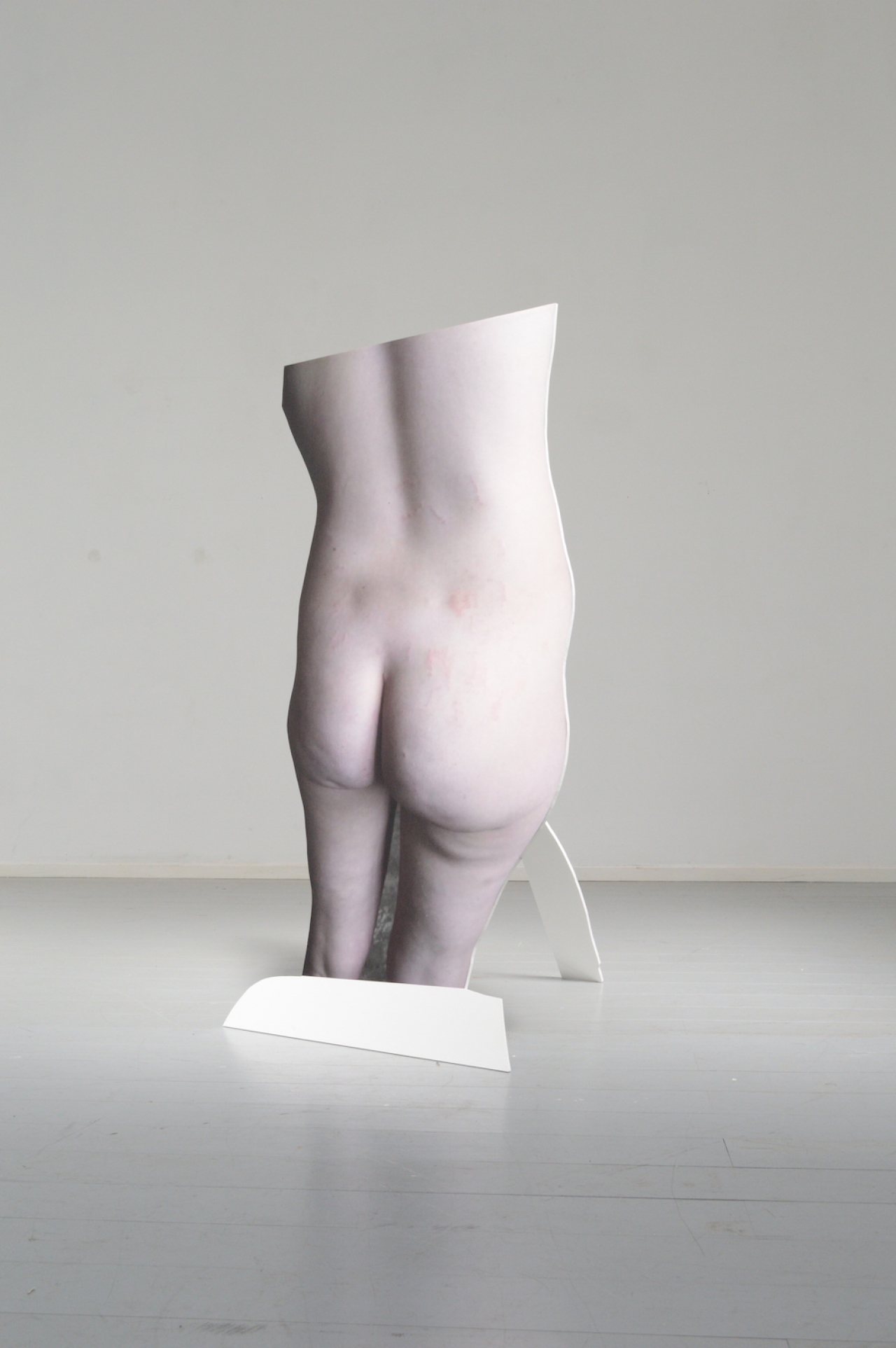
The greatest and most important work that they undertake cannot originate in harmony with the world.
Flaw 3: The artist and his muse
Marianne Ihlen passed away in 2016 at the respectable age of eighty-one years old in her birthplace Oslo. She left behind two children, had a successful career in the oil industry and practised non-violent Buddhism. But that is not why we remember her. In the early sixties she had a passionate love relationship on the Greek island Lesbos with folk singer Leonard Cohen. For babyboomers her death was a good reason to bring out Cohen’s 1967 evergreen ‘So Long Marianne’. For what is more romantic than the embodiment of such an artist couple who, involved in an intense and passionate relationship, abide by a shared love for the arts? It’s beautiful, of course, to have a love song written about you, but I assume a selfmade woman like Marianne would’ve found it highly irritating that her entire life was reduced to a chorus in which Cohen languished that he loved to share a bed with her and couldn’t live without her. Muses like Marianne are always loved for the wrong reasons: their slender neckline, their mysterious glance, the curvature of their bosom and so on. Once there was a time when the call (‘invocatio’) of the Muses was a sacred duty. In the ancient literature of Hesiod, Homer and Virgil artists begged for the approval and support of the mighty Fates. But despite their innovative avant-gardist ideas, most artists from the twentieth century appeared to be resistant to artistical equality and women’s emancipation.
The muses in question are often worse off than Cohen’s Marianne. Max Beckmann (1884-1950) forbid his girlfriend Minna Tube, who’d attended the same class as he had at the Academy of Weimar, to paint. Eventually she went on to sing and made it to mezzo-soprano. Not a single recording is preserved of her repertoire, but as a model she appears in the majority of Beckmann’s masterpieces. Lovis Corinth (1858-1925), who fell in love with the paintings of his pupil Charlotte Berend (1880-1967) did the same when his love took the name Berend-Corinth: her talent made him so jealous that he sabotaged her artistic career. On his self-portraits he painted himself as a grand master, equipped with a brush and palette and his naked wife within arm’s reach. This way he degraded her publicly from colleague-artist to a willing model. Many of these relationships started in disparity: the young female became an apprentice of the established grand master and lesser privileged girls became parttime painter’s models and fulltime footstool. The account of Lydia Delectorskaya, the muse responsible for Matisse’s breakthrough in abstract painting, is exemplary. Lydia was a Russian immigrant who, because of her intellect, was admitted to the prestigious Sorbonne University in Paris. After a few years, she was unable to afford the study costs and responded to an advertisement of Matisse, in which he asked for a model. Soon she became his personal assistant, doing his paperwork, organising his exhibitions, meanwhile modelling for numerous paintings and drawings of the grand master. She described this period rather prosaically: “Gradually I started to adapt and felt less ‘chained’, .. eventually even started to get interested in his work.” (Matisse and His Models, Hilary Spurling). The life of a muse wasn’t exactly a bed of roses and without financial leeway a successful career, even to bright and talented women, was out of reach. In the twenty-first century the muse is not necessarily a woman and the artist bringing her or him to life is not necessarily male, but the romantic image of an artists’ relationship that propels a mutual passion to great heights has not lost its’ power. In an unequal power dynamic, in which students search for recognition and teachers bask in self-confirmation, this can be a toxic cocktail that breaks plenty of hearts and careers. It would be to the academy’s credit to actively commit to a healthy and meaningful pedagogic relationship between students and teachers, that makes us break the paternalistic mould of the creative genius and the tragic muse.
Flaw 4: Selection leads to excellence
Art academies, conservatories and drama education take up a unique position within higher education, as they select their candidates based on a matriculation in which artistic abilities are being assessed. To have a good chance, academies recommend ‘shadow education’: preparatory stages, basic educations and orientation courses enlarge the success of students that are well off. The course fee (€ 1.050) for a basic education Visual Arts at the HKU is equal to a half year of academic tuition. This is where the inequality in opportunities starts. Adolescents from families with a smaller income fall by the wayside. Entire committees and taskforces examine how to make art education more inclusive and divide the opportunities more fairly. Often the main focus is on a necessary change of attitude, but the revenue model tied to the matriculation remains a blind spot and causes mainly white students from the upper middle class to have a head start from the outset.
Selecting suitable candidates has been practiced for a long time and is part of the emergence of the first art academy in Western-Europe. The Sun King Louis XIV founded the Académie Royale de Peinture et de Sculpture in 1648. It was not done out of pedagogic ideals of enlightenment, but because of his personal need of court artists for his politics of state culture. The early academies groomed artists to enter the French state’s service and in order to be admitted candidates performed a masterpiece to be judged by a jury. It was a select company, because only students with a certain social status and outstanding references were accepted. But once admitted they were set, since the membership of the Académie Royale was lifelong and they automatically became court purveyors. In the subsequent centuries the Académie Royale established the benchmarks of ‘good art’ through yearly recurring exhibitions by its’ members in the salon carré of the Louvre. Albeit the Louvre became a state museum after the French Revolution, the fundamental principles of selection, exclusion and election were continued in the Parisian Salons that dominated European art up until the end of the nineteenth century. A jury decided on the admission to these grand exhibitions, of course, and consisted of prize winners from previous Salons. From the outset, academies were part of an institutional system in which selection and exclusion were important instruments to ensure the internal quality. That so-called quality always confirms the importance and the role of the institute that provides and decides. It’s marking its own homework. Art education has traditionally been strongly tied to awards, competitions and grants and resembles the world of professional athletes in this regard. Take a look at the many graduation prizes for exceptional artistic performances, innovation or entrepreneurship that academies create. The form of these talent shows is taken directly from the cultural industry: students compete against each other in preliminaries, often through public presentations and exhibitions that are evaluated by a jury. It seems a good incentive for graduates, but it’s a narrow understanding of excellence that always ends with a single winner against many losers. There can only be one number one, can’t there? In these cone-shaped processes quality is measured by exclusion of ‘lesser candidates’. The problem is that academies reflect too little on what the requirements are to ‘become the best’. It is disastrous to the students’ sense of community, because it facilitates a pecking order and sustains the idea that fellow students are adversaries that one must eliminate in order to have success. It does not improve the learning environment, to which experiment, research and play are so vital to artistic growth. After all, playing is teleological and according to Huizinga, free action is at its core. When made into a ‘wipe out game’ by letting students compete for recognition, they are essentially stripped from the safe learning environment that is necessary for growth. Because learning, as well within an art academy, is above all a social process in which students especially learn from each other and make progress through the interaction with their fellow players.
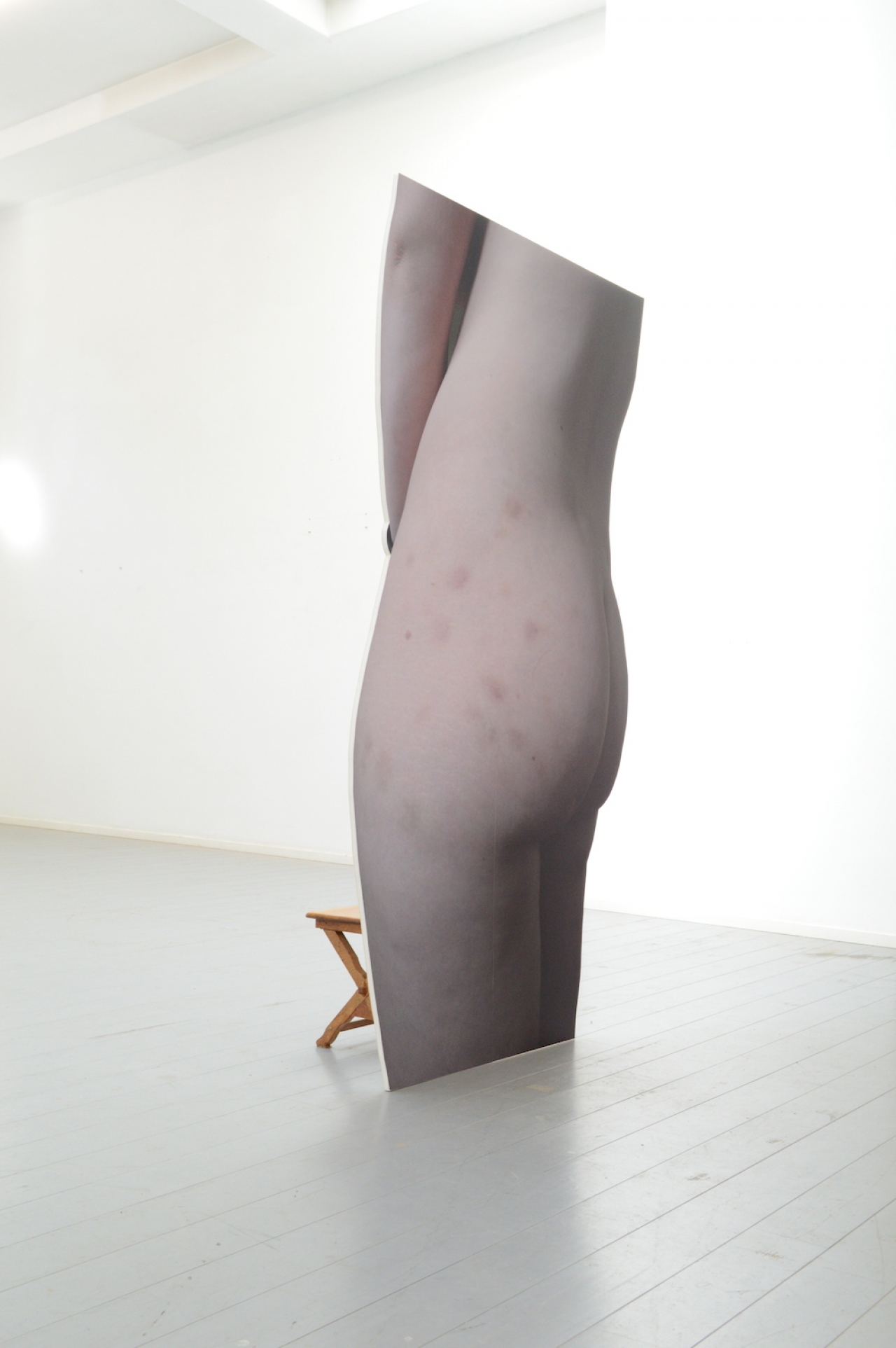
The problem is that academies reflect too little on what the requirements are to ‘become the best’
Flaw 5: Imprinting and reproduction
As with each transmission of culture, education is a serving hatch to norms and values, role models, behavioural codes and stereotypes. Transmission of knowledge does not only take place on basis of implicit role patterns about what good art education is, how a visual process works and what good works of art looks like. And as counts for the art that it teaches about, academies take root in a canon of traditions. The artists teaching at an academy have once been students themselves, occasionally even at the very same academy they teach at years later. They’ve often passed their time at the academy with flying colours and fine results, were positively confirmed by their teachers and left the academy as a young talents with an encouragement prize. Their success at the academy, and afterwards in the art world, is exactly the reason they’re asked as a teacher. These are not the students that struggled with negative feedback, that felt excluded or misunderstood or weren’t able to develop well within the prevalent aesthetic views of the programme. In short, the teachers of today have often been students that were favoured and endorsed by the contemporary academic system. I am convinced that teachers are involved and honourable, but education is human work and it is difficult to be sensitive to systemic errors and shortcomings if you’ve never shared the experience.
But sadly, most teachers at an art academy haven’t been educated as teachers, but as artists, designers or critics instead. They bring a lot of valuable specialist knowledge about the art profession, but aren’t schooled didactically and pedagogically. A safe learning environment, a clear class structure or viable group organisation are all important preconditions to students to come to a rich artistical process. But the focus is often on the artistical content, that is considered much more important than arranging an artistic learning process. Some has improved over the last decade: teachers that have permanent contracts are obliged to attend a course in didactic competence. Most teachers work as freelancers, guest lecturers or are attached to the academy through temporary assignments. That didactic competence is thus only acquired by small part of the teaching staff, causing the majority to teach ‘by feel’ and based on imprinting. The reproduction of role patterns from the education that one has followed him- or herself often happens unconsciously. Teachers and students, men and women, simply participate with the system as they encounter it on the day they start. But exactly this repetition holds the implicit judgement of quality and stereotypes in which both the work and the working method of students are being defined. I think this is an important reason why sexism, racism and exclusion continue to lurk on academies unwantedly and unintentionally.
But sadly, most teachers at an art academy haven’t been educated as teachers, but as artists, designers or critics instead.
Flaw 6: That’s simply the way it is
As I spoke with a teacher on the current wrongdoings within the academic education she said something remarkable. Of course she condemned the crimes of Andeweg, but was also convinced we had to prepare students for ‘the art world’. It provides less chances for women, is harsh and competitive and to achieve anything, one can better learn to deal with the narcistic behaviour of male gallery owners, museum directors and curators. She illustrated this by an example: a talented female student of hers had graduated and won an encouragement prize that was awarded by an influential museum director. Already during the drink after the award ceremony this mucky-muck started sending the student flirty text messages: Her work belonged in his museum, he would see what he could do for her, also knew a few interested gallery owners and perhaps this could be discussed during an intimate dinner. The unwanted attention through text messages continued for a couple of weeks, causing her partner to be so annoyed that he threatened to punch the museum director in the face. The student in question had a dilemma, because she obviously wanted an exhibition in a prominent museum, but had little appetite for a sticky date with a man in his sixties and, moreover, she loved her partner. The colleague advised to stall the steamy museum director until there was a concrete commitment to an exhibition. It never came.
At least Andeweg’s story shows that there still exists a hegemony that systemically favours men and discriminates against women. Unlike my colleague, I do not believe that we should prepare students for an art world as described above. The partner is quite right as far as I’m concerned; this man deserves to be punched in the face. I would like to turn it around: we educate students to be able to work successfully as makers, designers or artists. But what does their success mean in this context? I wonder what all those museum directors and gallery owners took away from their student days if they subsequently exclude talented women, turn their backs on victims and pretend like their noses bleed. After all, these former students did not only copy coloration and concepts from their teachers, but also a role pattern in which exclusion was the norm. I wonder if we teach students the right things if it doesn’t lead to an art world that’s inclusive and empathetic and divides chances equally. Because it works the other way around as well: an education does not only prepare students for a specific field of work, but it also influences the field by teaching young artists that are artistically shaped by it the proper empathetical attitudes. Perhaps academies are insufficiently aware of this exemplary role and impact.
Judith Boessen works as a studydirector at the HKU and is advisor of the Fonds voor Cultuurparticipatie and Cultuurraad Eindhoven. As a teacher she was tied to various colleges for the arts like ArtEZ, AKV Sint Joost, Fontys, Hoogeschool Zuyd and Hanze Hogeschool. She loves art historical trivia and her favorite pastime is laying on the couch and hugging her dwarf poodle Toto while eating liquorice and scouring Wikipedia for bizarre facts.
The images added to the article are of Eleye Boerenkamps 1994, Helmond). Her work is often described as autobiographical, direct, uneasy and personal. She converts her relations and daily situations into video, drawings, sculptures and prints, in which her friendships, family history and love life are reflected. Look for further information on: https://www.eleye.nl or https://www.instagram.com/studioeleye/
The main sources for this article were:
Why Have There Been No Great Women Artists?, Linda Nochlin;
Liebe, Kunst & Leidenschaft, Barbara Schaefer and Andreas Blühm;
Matisse and His Models, Hilary Spurling;
Klein lexicon van managementjargon, Rudi Laermans, Lieven De Cauter, Karel Vanhaesebrouck
This article is translated by Jesse Lemmens

